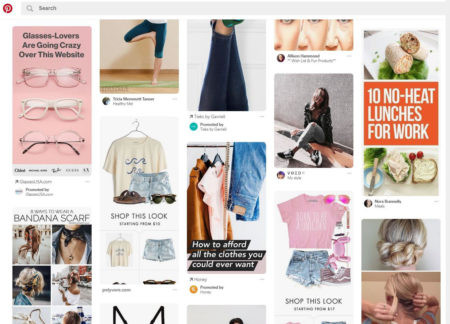RETAIL BOOST 2018 RECAP: PAID SOCIAL & UNDERSTANDING THE CONSUMER MINDSET
May 24, 2018On Wednesday May 9th Catalyst and MITX joined forces to host Retail Boost, an event dedicated to helping advertisers boost sales through innovative digital marketing. Hosted at the Rue La La headquarters in Boston, the event united leading retail brands and digital marketing experts to discuss opportunities for driving sales through direct channels, social platforms, third parties, and more.
Here we’ll recap the discussion from the event’s exciting social panel, “Selling on Social: How to Move Past Engagement & Maximize Sales.”
Selling on Social: How to Move Past Engagement & Maximize Sales
- David Chang, Entrepreneur & Angel Investor (Moderator)
- Arthur Sevilla, Vertical Strategy Lead, CPG, Pinterest (Panelist)
- Kieley Taylor, Managing Partner, Global Head of Social, GroupM (Panelist)
David Chang, panel moderator, focused the conversation on how advertisers can tailor their social media marketing strategy to maximize results. He did this by posing three key questions:
- What’s working?
- What hasn’t gone well?
- What’s does the future of social & consumer interaction look like?
What is Working?
Arthur Sevilla, CPG Vertical Strategy Lead at Pinterest, described Pinterest as a visual discovery engine. He explained that most consumers who visit Pinterest are in the consideration stage. They may be looking to travel, but they haven’t decided on Croatia as a destination yet. Or they may be looking for a new couch, but haven’t decided on color or style. Given this, a successful Pinterest strategy should consist of compelling visuals targeted at the consideration mindset.
Sevilla also noted that Pinterest has significant influence over consumers’ purchase decisions. He noted that 82% of Pinners report that branded content on Pinterest made them take action. He said that another 66% of Pinners say that they’ve made a purchase because of branded content on Pinterest.
Kieley Taylor, Global Head of Social for GroupM, also shared a tip for Pinterest creative assets. She cited a brand lift study that found that a GIF performed as well as a video on Pinterest with the added benefit of having a much lower production cost. Given this, some brands may want to test the performance of GIFs in their Pinterest strategy. Since Pinterest now accepts feeds, Taylor also suggested testing PLAs as a way to bridge the gap between search and social and drive sales.
What Needs Improvement?
According to Sevilla, brands that just repurpose their Google branded keywords on Pinterest don’t do as well given that 95% of keyword queries on Pinterest are unbranded. He recommended that brands create keyword strategies that target consumers further up the purchase funnel.
Chang, Sevilla, and Taylor also discussed several other areas of social media advertising that need improvement:
Attribution
- Taylor urged brands to think in a more holistic way and look at the interplay between channels. Decisions on value of a tactic are still being made on last click attribution, which can be misleading and shortsighted.
- Sevilla recommended looking across all tactics and assigning different weights when making optimization decisions as well as extending the attribution window to get a true picture of tactical contributions in the path to purchase.
Brand Safety
- While Sevilla noted that brand safety concerns don’t seem to be as relevant for Pinterest, Taylor suggested there is still work to be done to protect brands from being linked to unsafe content across numerous channels.
Videos
- Taylor also had some actionable ways for brands to improve success with videos. For example, she noted that re-purposing TV spots doesn’t usually work on social channels as 85% of viewers abandon TV spot videos by the 3-second mark, which means advertisers pay for the consumer view, but often do not get the branded impression. Instead, Taylor recommends creating shorter videos with the branded messaging included upfront.
- Taylor also advised brands against the chase to create viral videos as often the branding/messaging gets lost. She has seen that well-planned and thought out videos tend to drive much better brand results than a ‘viral’ video.
The Future of Social Interaction
Sevilla predicted that it’s going to be all about images and videos. He anticipates that consumers will seek information with traditional text queries as well as image queries using things like the Pinterest Lens app. Lens lets you create an image query with a click of a smart phone camera.
Taylor anticipates that more brands will use messaging channels like WhatsApp, etc. to connect with consumers.
Conclusion
Ultimately, all of the panelists agreed that in order to drive sales through social media advertising (regardless of platform or tactic), marketers must be hyper-focused on their audience. They must first understand consumer receptivity across the various touch points and then use those insights to maximize results. For strategies and tips for taking an audience-first approach to social, visit the Catalyst website to watch our webinars dedicated to advanced social media marketing:
- Pinterest Pointers: 5 Key Considerations for Getting Started
- Wow Your CMO with Social: 5 Ways to Uncover Social Media Insights that Drive Business Results
- Creating Impact: 7 Tips for Content That Builds Your Brand & Drives Business Results
- ROI Revolution: 5 New Rules for Maximizing Social Media Return
Or, drop us a line at info@catalystdigital.com!






